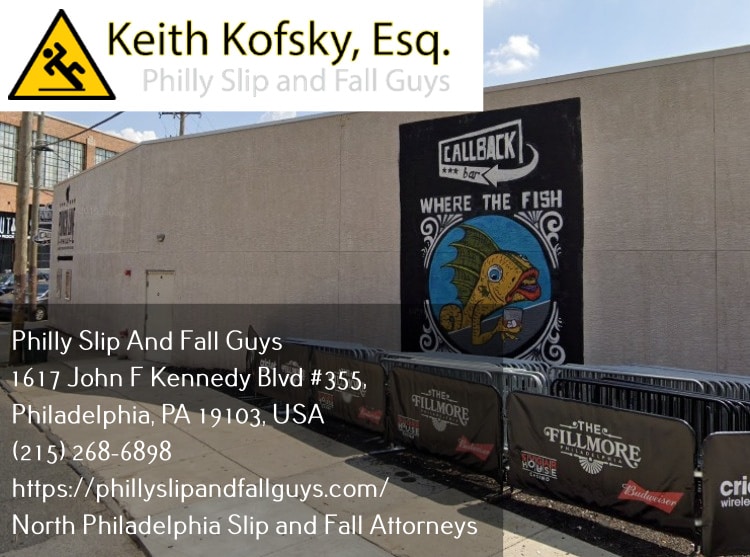The Early History of North Philadelphia, PA
The slip and fall attorneys in North Philadelphia, PA, at Philly Slip And Fall Guys, offer the following introduction to the neighborhood’s history.
North Philadelphia
The region of North Philadelphia is immediately north of Vine Street and Center City. It is centrally located within Philadelphia County in Pennsylvania. The Delaware River flows along its southern border, and the Schuylkill River flows along its western edge. Some of the communities found in the area include Brewerytown, Fairmount, Fishtown, Glenwood, Hartranft, Koreatown, Northern Liberties, Poplar, and Juniata.
Early History
Before being incorporated into a city, the region consisted primarily of agricultural townships. During the 18th century, as the city grew in significance and, consequently, population, the region quickly became a desirable alternative to the bustling city. Many mansions began to cover the landscape, and by the end of the 18th into the 19th century, many small-town centers had developed to accommodate the growing population.
In the mid-19th century, rapid urban expansion caused the implementation of The Consolidation Act of 1854. This law reallocated many of the townships within the county to the city of Philadelphia. This caused an influx of European immigrants to move into the area, putting an end to the Northern region serving as a suburb to the city. Row houses were built, but many of the neighborhoods kept the name of their ancestral villages despite being decentralized.
Historical Landmarks & Museums
The community has preserved much of its history through its many historical landmarks and museums. Some of these include:
George W. South Memorial Church of the Advocate: Construction on the church, designed by Charles Marquedant Burns, took place from 1887 until 1897. In 1974, the church ordained the first women priests in the Episcopal Church, known as the Philadelphia Eleven. Within the church are 14 murals depicting elements of the Black experience in the country, such as slavery and emancipation.
Philadelphia Doll Museum: This museum was established in 1988 by Barbara Whiteman, an avid collector of black dolls. Whiteman believed in the significance of researching and preserving the history of blacks in America. The museum contains over 300 dolls on display but has a collection of over 1,000.
Wagner Free Institute of Science: In 1855, the institute was founded by William Wagner, a merchant, philanthropist, and scientist. Wagner longed to provide free educational courses to the world and started offering free lectures in his own home. The lectures became so popular that he needed a larger venue to host his growing audience. The institute was designed by John McArthur, Jr., a Philadelphia architect who would later design Philadelphia’s City Hall.
The Fillmore Philadelphia: Located on East Allen Street, the Fillmore Philadelphia is a great place to view concerts. The industrial site first opened in 1965 before moving into the area. The 25,000-square-foot building can hold up to 450 guests.
Education
Public schools are offered in the area by the School District of Philadelphia. Some of these include:
- Strawberry Mansion
- Murrell Dobbins C.T.E.
- A. Philip Randolph C.T.E.
- Philadelphia High School for Girls
Higher learning can also be obtained without traveling too far. Many of the institutes available include:
- La Salle University
- Community College of Philadelphia
- Messiah College, Philadelphia Campus
- Temple University
Demographics
Within the ZIP codes in the area, there were 340,350 residents in 2010. The racial demographics of the greater community included the following:
- Non-Hispanic Black or African American: 169,494 (49.8%)
- Hispanic or Latino of any race: 103,806 (30.5%)
- Non-Hispanic White: 34,375 (10.1%)
- Asian and Pacific Islander: 17,017 (5.0%)
- Mixed or Other: 14,635 (4.3%)
- Native American: 1,021 (0.3%)
There is a large population of Puerto Ricans and African Americans. Most of the eastern region consists of Puerto Ricans, and the northern part contains a large population of Black Muslims. Other ancestries include:
- Irish
- Dominican
- Haitian
- Cuban
- Korean
- Polish
To learn more about the region, explore this article offered by our slip and fall lawyers: A Closer Look at Juniata, PA.
Benefits of a Trip and Fall Lawyer in North Philadelphia
The trip and fall lawyers at Philly Slip and Fall Guys offer reliable services to clients in North Philadelphia and the nearby areas. Slip and fall accidents can happen at any place, at any time. They may occur while you are at work, while walking in a public space, or in a local store. Individuals may slip on icy sidewalks, wet floors, or dark staircases. If you believe the accident was due to another person’s negligence, you may be entitled to compensation.
Our team of slip and fall lawyers will evaluate your case and help you receive payment for pain and suffering, medical bills, lost wages, and more. We are able to negotiate with insurance adjusters during the claims process, allowing our clients to focus on recovery. If necessary, our slip and fall lawyers will take your case to court to make sure you are paid a fair amount for your injury.
Our Local Office
The slip and fall lawyers at Philly Slip and Fall Guys have proudly represented victims of slip and fall injuries in the area for years. Our team of experienced trip and fall lawyers will work to verify that injured parties obtain proper compensation for accident-related injuries. Give us a call for your no-obligation case evaluation and to learn more about how we can help you.
Philly Slip And Fall Guys
1617 John F Kennedy Blvd #355,
Philadelphia, PA 19103, USA
(215) 268-6898
